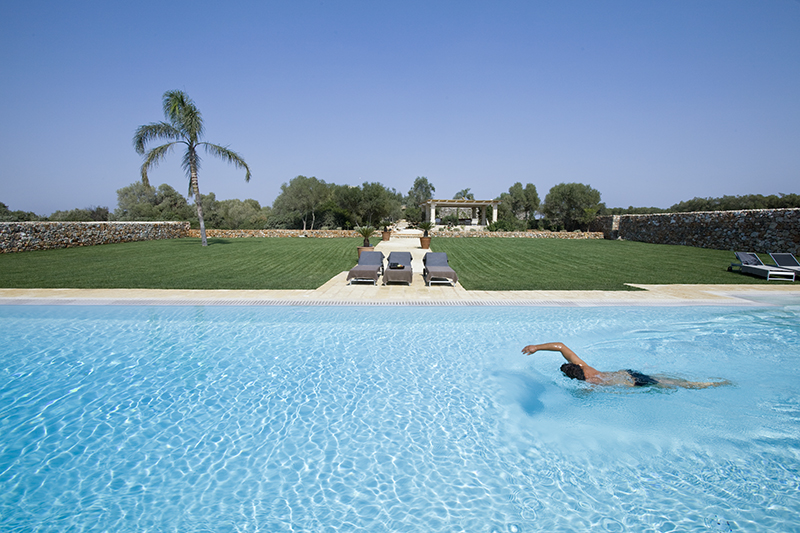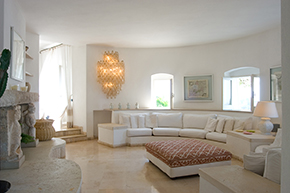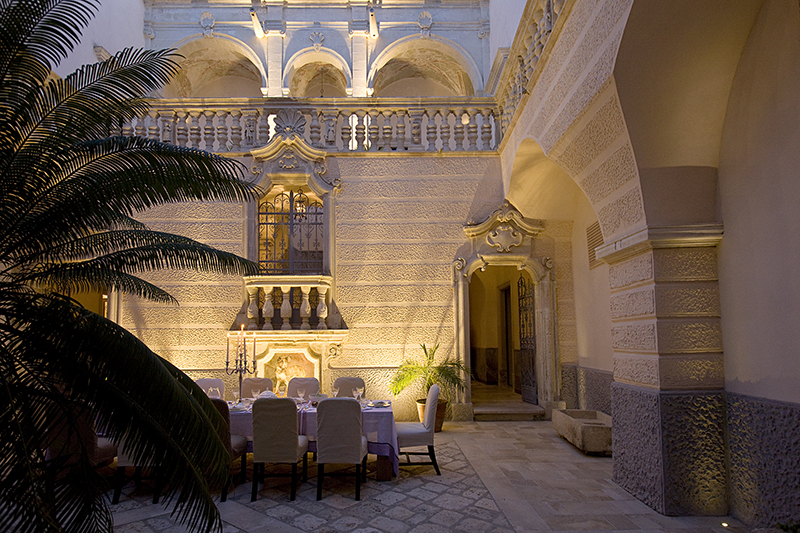La dolce vita doesn’t come any sweeter than this little-known region of Italy.
Our speedboat is cruising through the jewel- bright expanse of the Adriatic Sea, along Italy’s easternmost coast where craggy cliffs dotted with caves rise from the azure water as far as the eye can see. Suddenly the boat slows and the bow turns until we’re heading directly toward a chasm in the cliff. The driver has something to show us.
The motor quiets as we drift slowly between two rock walls and into a majestic sea cave, sliding out of the bright afternoon sunlight and into cool shade. The water in the cave is a deep, dark blue, except for one spot where a ray of sunshine pours through a natural skylight to create a pool of brilliant cerulean that sparkles like crystal.
Translucent jellyfish, floating just below the surface, shimmer in the sunlight. The scene is otherworldly and hushed, as if we’ve come to worship at one of nature’s cathedrals.
A few minutes later, we’re out in the open water again and heading for the seafood restaurant Lo Scalo, perched on a cliff’s edge in Marina di Novaglie. I step out of the boat onto a rocky landing and climb the steep steps that are carved into the ancient cliff side. Soon, I’m sitting on Lo Scalo’s whitewashed patio, sipping a glass of chilled white wine and staring into the glistening Adriatic below.
  |
This is Puglia, the Italy of one’s imagination, an unspoiled and somewhat undiscovered region that makes up the “heel” of Italy’s boot. This spectacular region is pure, authentic and unadulterated southern Italy, and travelers who come here have the place virtually to themselves. In Puglia, the largest crowd you might see is a group of Italian school children on a day trip. Flying into Brindisi from Rome is quick and easy, making Puglia a delightful diversion where visitors can easily fill five days exploring the region’s beaches, Baroque towns and rustic restaurants.
Discover the striking opulence of Lecce, home to the breathtaking Basilica di Santa Croce and an excavated Roman amphitheater; the whitewashed medieval grandeur of Ostuni, “The White City” on a hill above the Adriatic Sea; and the impressive fortress walls of Gallipoli and Otranto.
Without the throngs of visitors that clog Italy’s more touristy cities, it’s easy find yourself quite alone in a peaceful piazza or wandering solo down a winding, cobbled lane. Puglia also boasts almost 500 miles of not one but two coastlines, the Adriatic and Ionian, which wrap around the Salento peninsula to create some of Italy’s most striking panoramas.
Despite its easy access from Rome, marvelous cities and gorgeous beaches, Puglia is relatively off the beaten path and still thrives as a mostly agricultural region. It produces 40 percent of Italy’s olive oil from almost 60 million olive trees which blanket much of the land.
The region also produces 17 percent of Italy’s wine, with its Primitivo grapes creating one of its most renowned reds. Puglian fare is rustic and sourced from the land and sea, from the freshly shucked mussels that are pulled from the Ionian Sea just hours before being sold by a fishmonger in Gallipoli; to the famous orecchiette pasta made from locally grown durum wheat; and the soft, fresh and buttery burrata cheese that’s traditionally eaten within a day of being made.
This affinity with nature extends to the deliciously relaxed al fresco lifestyle that permeates Puglian culture. The countryside is dotted with masserie, former agricultural estates crafted of heavy stone. Today, many of these fortress-like structures have become lavish private villas and luxe hotels.
  |
At the most luxurious of these masserie, guests will find sprawling, rooftop pergolas with thick-cushioned lounge chairs and floor pillows, vast swimming pools, olive groves, and wildflower gardens thick with bright red poppies and delicate yellow daisies.
At one such retreat, Villa Elia in Gallipoli, an outdoor pizza oven, herb gardens, fruit trees, and shaded patios invite lazy afternoons and long, lingering conversations over bottles of Puglian wine.
Puglia’s beaches are equally stunning. Places like Punta della Suina on the Ionian coast feel secluded and private, thanks to the grove of trees that surrounds the quiet, sandy cove. Other beaches dot the Puglian coastline from Bari to Otranto to Gallipoli.
From the patio of Lo Scalo, I watch a family of locals laugh with delight as they take an impromptu afternoon dip in the shimmering waters of the Adriatic. They look completely at ease, and I realize that I feel the same way. From this perfect perch at the edge of one of Italy’s last undiscovered places, it’s hard not to.
THINK ITALY, THINK PUGLIA
Luxury villa rentals are perfect for travelers who want a sumptuous home base from which to explore. Think Puglia is the exclusive provider for the best villas in the region with estates boasting amenities like outdoor cinemas, private pools, gyms and steam rooms, and fine art and antique collections.
Think Puglia demonstrates its regional expertise through excellent on-the-ground support and can accommodate any request, from airport transfers, to wine delivery, in-villa massages, and local cooks who can prepare authentic meals for guests.
For an elegant city stay, Palazzo Gorgoni is the essence of comfort. This restored 18th century palazzo with eight bedrooms, a private pool, gym and rooftop lounge is in the heart of Galatina, a beautiful Baroque city located less than an hour’s drive from the airport in Brindisi.
For a stunning seaside stay, opt for Villa Blanca. This five-bedroom hilltop villa’s outdoor living space is gloriously appointed with a shady pavilion and an infinity edge pool overlooking the delightful resort of Santa Maria di Leuca. thethinkingtraveller.com


